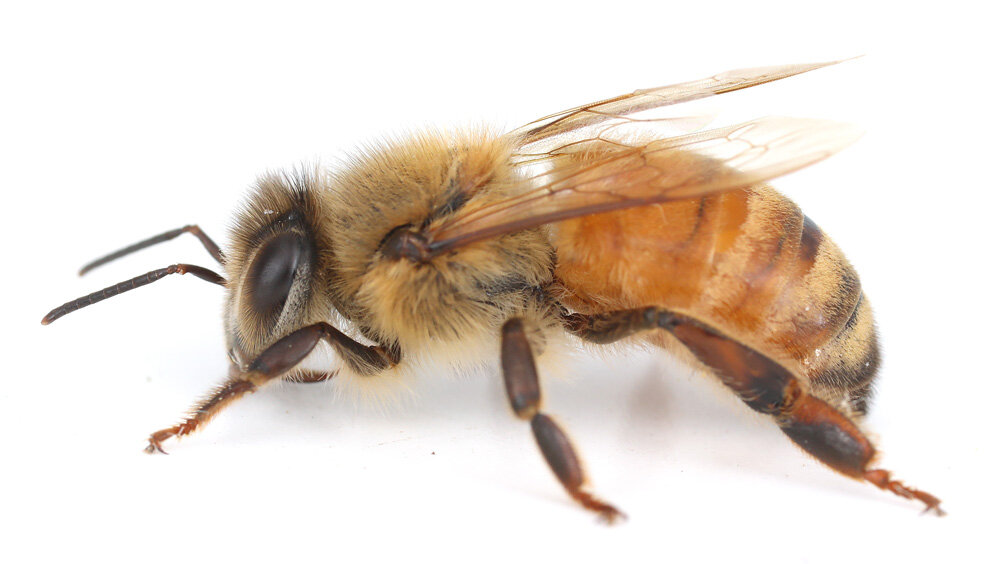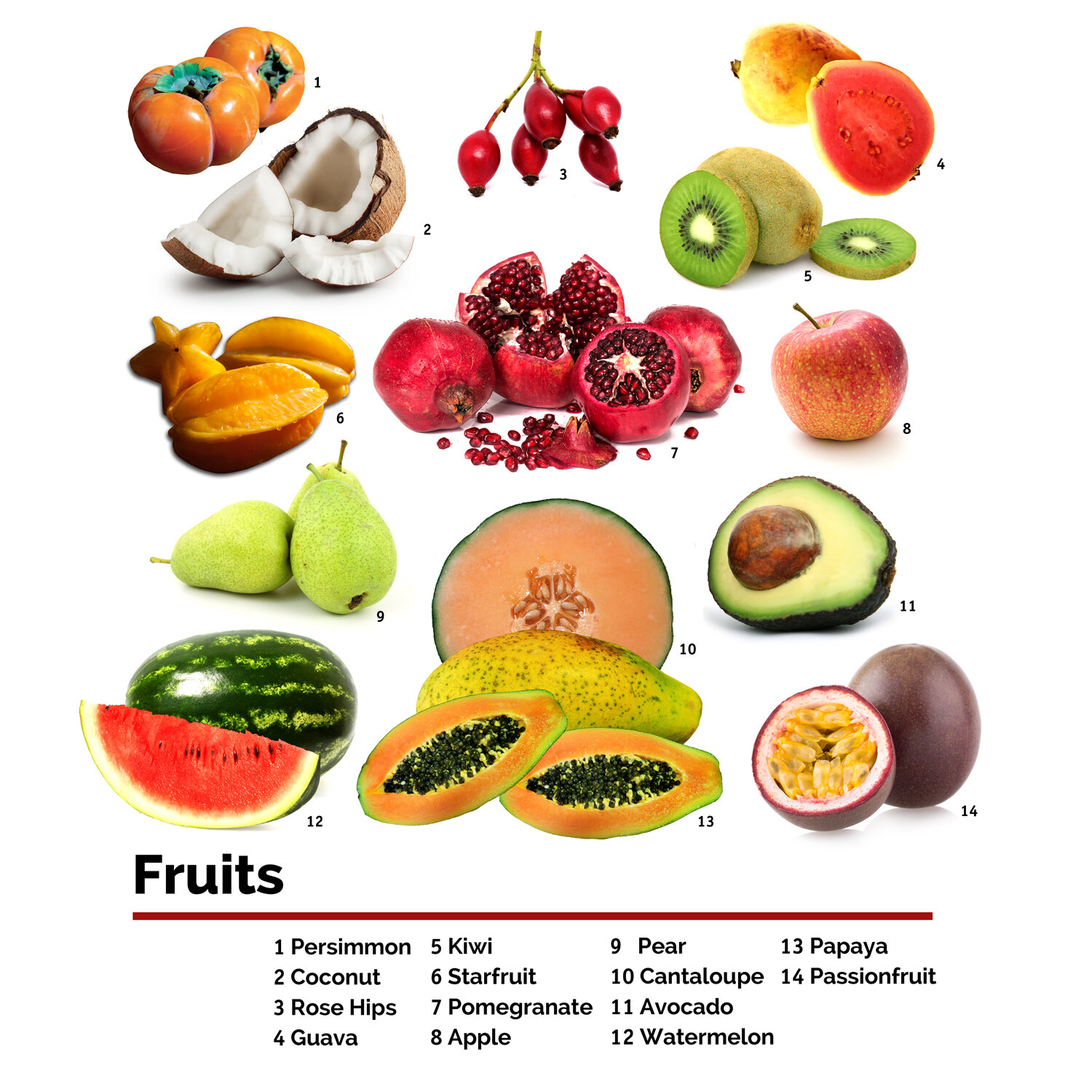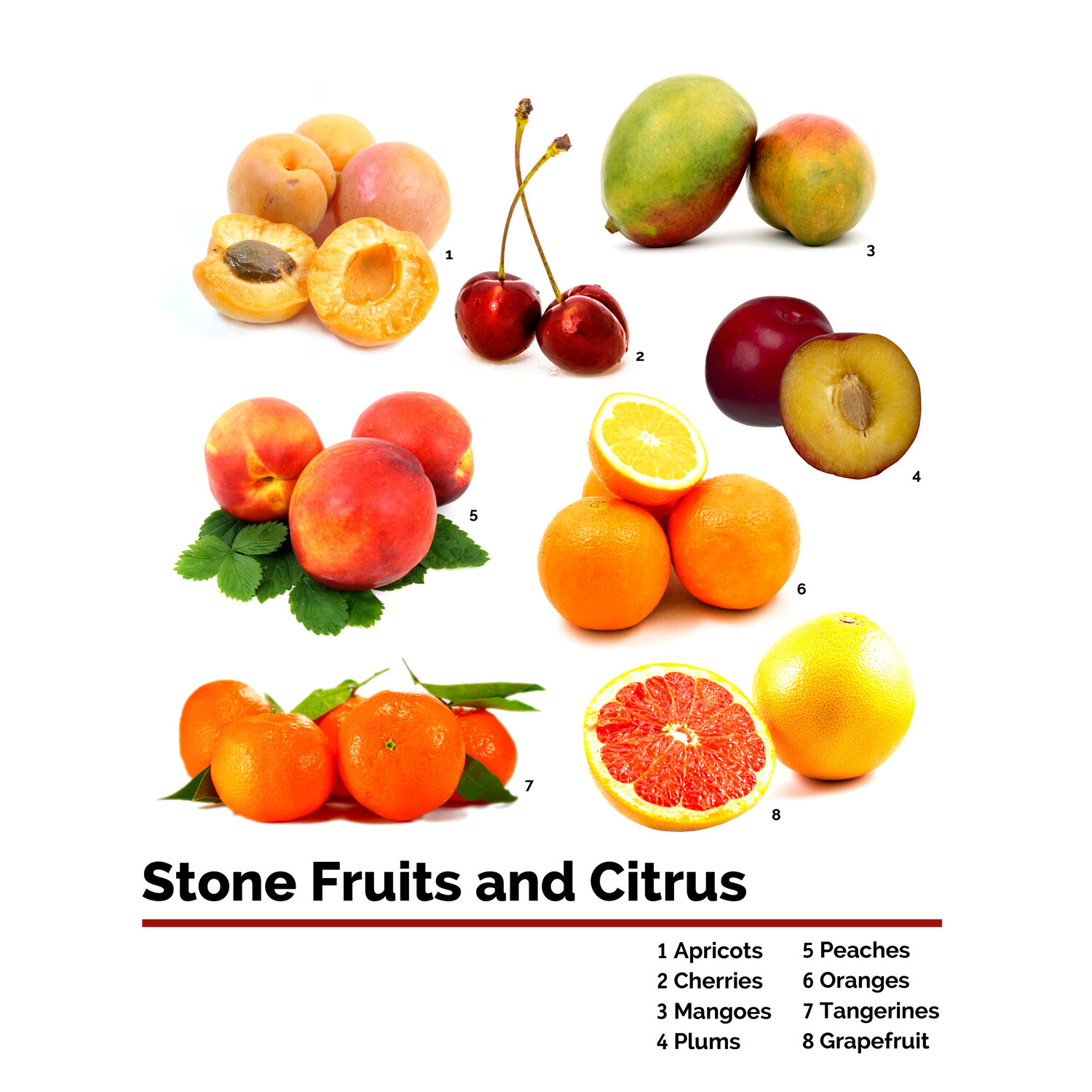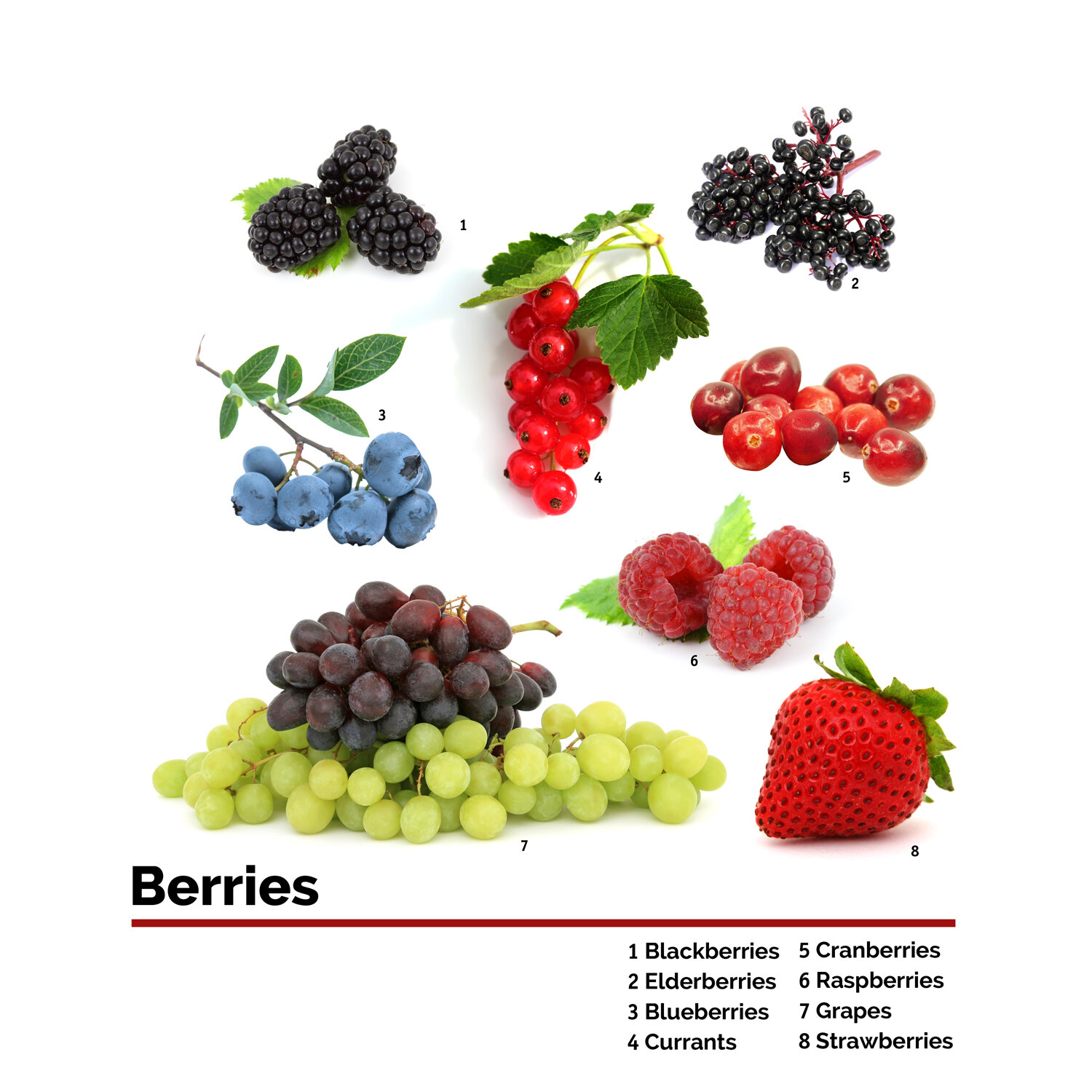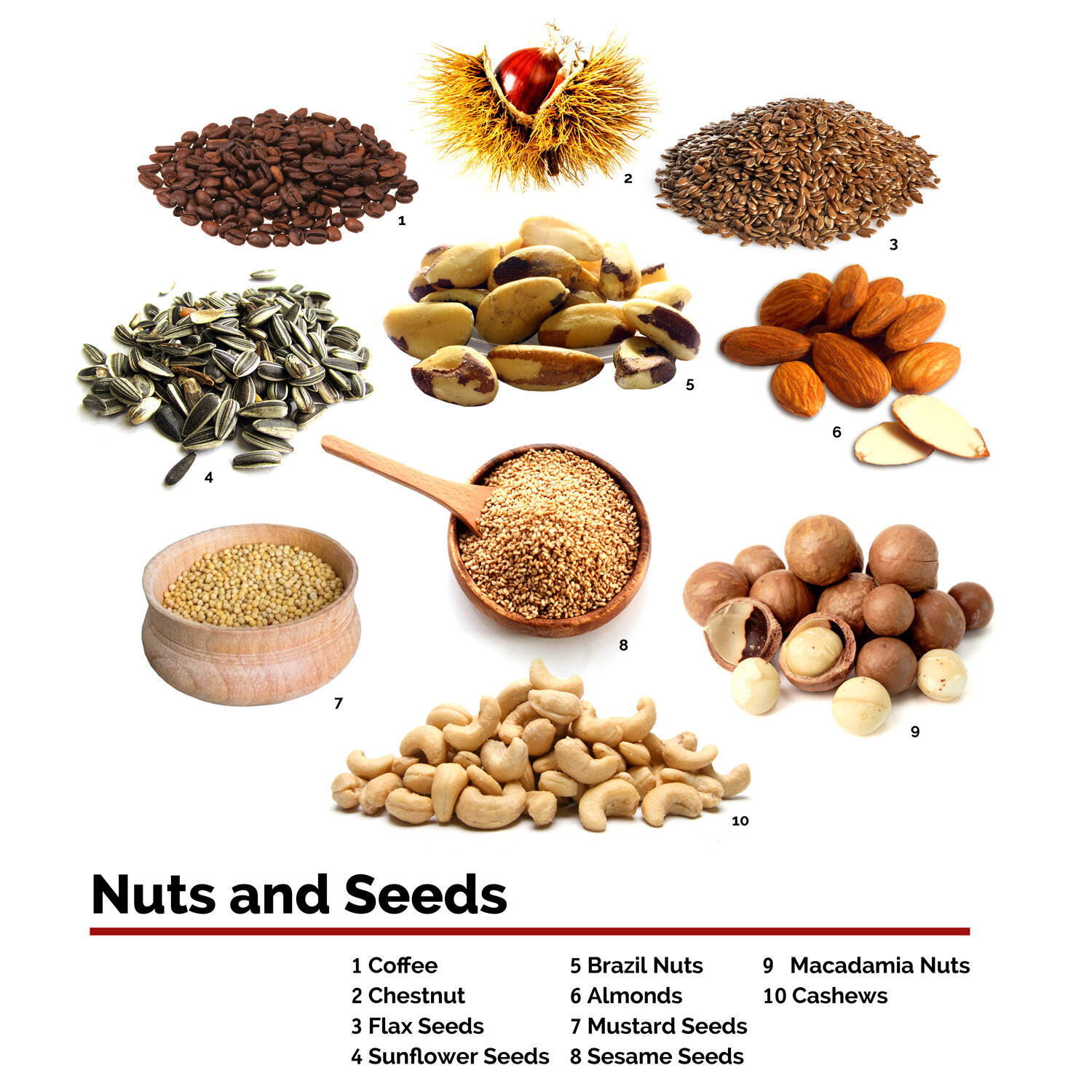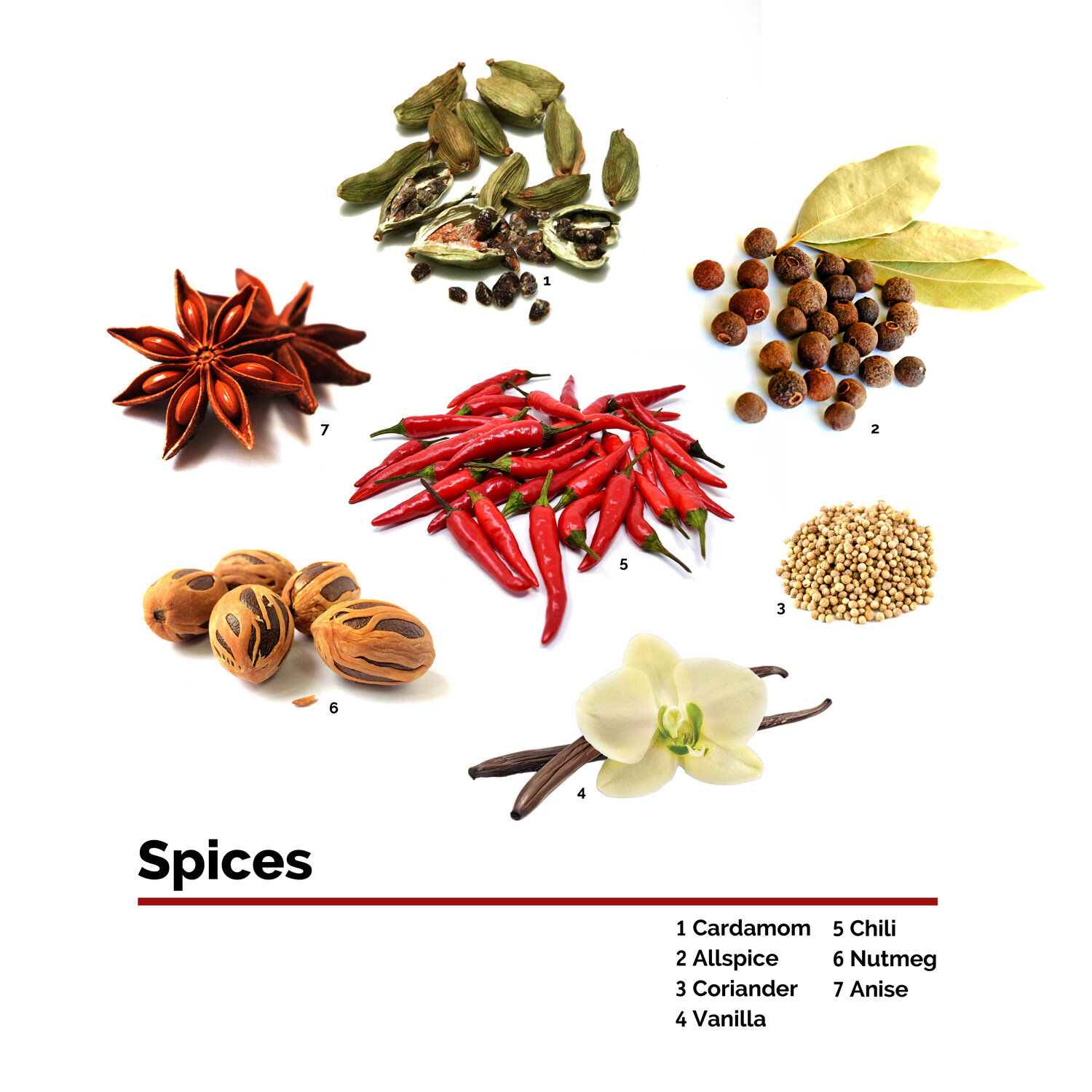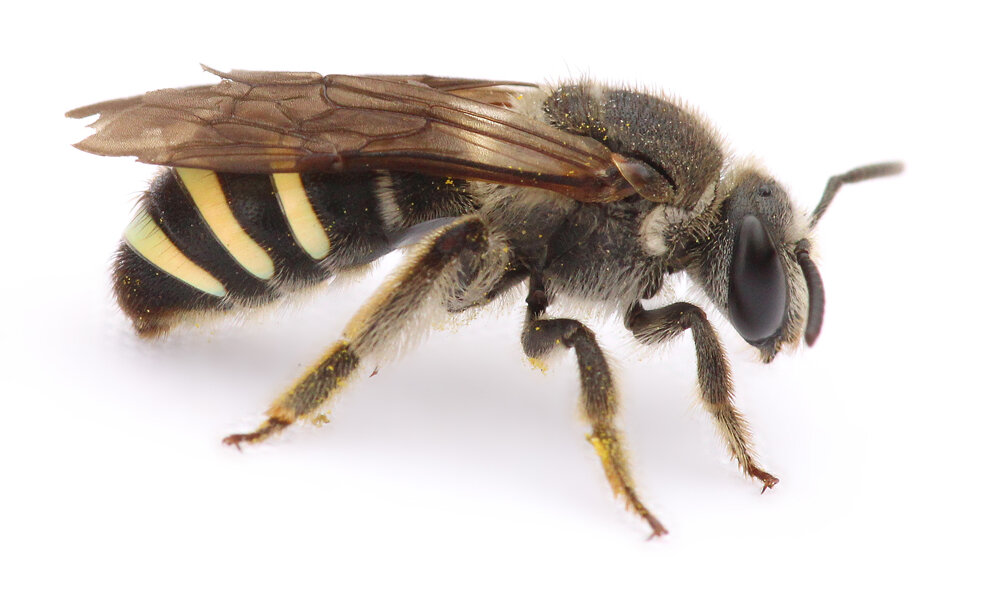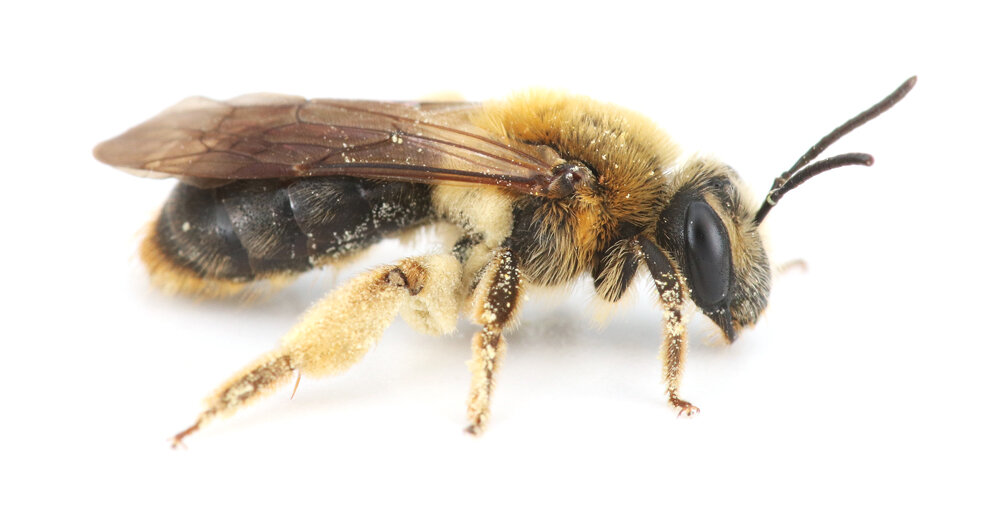Bees and Agriculture
Crop Pollinating Bees
Humans depend on pollination for our most nutritious and flavorful foods. Our diets are based mostly on self-pollinated or wind-pollinated grains. But crops made possible by pollinators provide diversity in our diets, including certain fruits, vegetables, nuts, spices, and coffee.
Examples of different types of important agricultural crops that are pollinated by bees.
European honey bees (Apis mellifera) get the most credit for crop pollination. Honey bee colonies with thousands of foraging workers are easy to transport between farms and orchards. But are honey bees really doing all the hard work?
Wild bees contribute significantly to crop pollination and can work even more efficiently than honey bees. Wild bees account for about a quarter of insect agricultural pollination in the United States based on some estimates. They’re vital to growing blueberries, apples, alfalfa, coffee, and more!
Squash Bees
Humans have cultivated squash, gourds, and pumpkins for 10,000 years. In 2016, the United States produced $149 million worth of squash, largely thanks to native squash bees (Peponapis pruinosa and Xenoglossa strenua). Squash bees are incredibly good pollinators, visiting flowers three times more often than honey bees. In places with a large and healthy squash bee population, squash farmers often don’t need honey bees to pollinate their crop.
The squash bee, Peponapis pruinosa. Image by Sam Droege (USGS Patuxent Wildlife Research Center; public domain).
Southeastern Blueberry Bee
The southeastern blueberry bee (Habropoda laboriosa) is an important wild pollinator of blueberries in the United States. This solitary, ground-nesting bee ranges from New Jersey and southern Illinois to Mississippi and Florida. Using buzz pollination, the species can remove up to 70% of pollen from flowers in one visit! Bumblebees also visit blueberry plants, but take over twice as long per visit. Habropoda laboriosa is such an effective pollinator of rabbiteye blueberry (Vaccinium ashei) in the southeastern United States that each female is estimated to be worth between $18 and $20 to a commercial blueberry grower.
The southeastern blueberry bee, Habropoda laboriosa. Image by Sam Droege (USGS Patuxent Wildlife Research Center; public domain).
Alkali Bee and Alfalfa
Alfalfa, commonly used for animal feed, is the third-largest crop in the United States today. Growing alfalfa requires a massive amount of seed production–over 80,000 tons each year. This is made possible by insect pollination.
Not all bees get along with alfalfa. The plant needs to be “tripped” for pollination. The flower deposits pollen by snapping outward and whacking the bee on its head. Many bees don’t like the process and instead try to steal its nectar without gathering pollen.
The alkali bee (Nomia melanderi), however, is excellent at pollinating alfalfa. This bee is so good at its job that it is the only solitary ground-nesting species used on an industrial scale. These bees pollinate about 2,500 pounds of seed per acre, compared to only 185 pounds per acre without the help of commercial pollinators.
Nomia sp., an alkali bee.
Apple Bees
Apples are incredibly dependent on pollinators. New York State, the second largest apple producer (after Washington) in the United States, relies on over 120 wild bee species for apple pollination. Native bees may be even better apple pollinators than honey bees! They carry and deposit more pollen per visit, resulting in higher fruit and seed production. Compared to honey bees, some wild bees forage more at lower temperatures and in worse weather. They also have a greater innate preference for apple flowers. Apple growers in the northeastern United States and eastern Canada now rely more and more on the diversity of wild bees. Many orchards no longer rent honey bee colonies for pollination.
Andrena sp., an apple bee.
New York State apple orchards host a remarkable diversity of bees. In surveys of orchards from the Hudson Valley to Lake Ontario over the past ten years, Cornell entomologists have documented 120 species of native bees visiting and pollinating apples. These native, wild bees are contributing significantly to the agricultural economy of New York, and they are doing it for free!
We can sometimes take our bee pollinators for granted. But a cautionary tale from China drives home the point that overuse of toxic pesticides can decimate local pollinator populations, requiring “human pollinators” to do the job. In the Sichuan Province, a major fruit-producing part of the world, heavy pesticide use has led to the localized extinction of all native and even managed bee species. In order to pollinate apples, farmers are required to do the pollinating. These “human pollinators” climb trees with a small container of apple pollen. Using specialized-designed brushes on long handles, they methodically transfer pollen to the open and receptive apple flowers. While humans can be used as pollinators, a much more sustainable solution is to conserve and nurture native bee populations to do the job for which they are so exquisitely adapted.
A person pollinating apple trees in China, taking the place of locally extinct bees.
Honey Bees
The genus Apis–the honey bees–includes seven described species, including the giant honey bee, the dwarf honey bees, the eastern honey bees, and the European honey bee. The European honey bee (Apis mellifera) is most familiar to residents of the United States. Apis mellifera is not native to North America. Its native range extends from northern Europe to southern Africa. European colonists brought Apis mellifera to North America as a source of honey. Today, the European honey bee is distributed worldwide. All other species of honey bees occur in southeast Asia.
European honey bee, Apis mellifera.
All honey bee species are eusocial, which means the colony consists of a single reproductive female (the queen) and thousands to tens of thousands of workers. Honey bee colonies form nests both in cavities and on exposed surfaces, such as cliffs and on exposed surfaces, such as cliffs and the branches of large trees.
Humans have hunted honey for thousands of years. Nearly all human cultures value honey for its high sugar content and medicinal properties. Cave paintings in Spain from 8000 B.C. depict local people foraging for honey. The Greeks, Romans, and Egyptians all had various ways of managing honey bees and harvesting honey. Honey is also the only food that will never spoil if kept in a sealed container. The oldest honey ever found was still edible after over 5000 years!
What are killer bees?
A “killer bee.”
The term “killer bee” describes a highly aggressive, non-native bee brought to the Americas for a Brazilian experiment to breed better honey bees. To do this, scientists interbred European honey bees with African honey bees. The European honey bee was selectively bred to be docile over thousands of years, but doesn’t thrive in tropical environments. The southern African bee is well suited to tropical temperatures and produces a lot of honey, but is highly aggressive. This aggression is probably a defense mechanism against predators in their native habitat, such as the honey badger.
The experiment ultimately backfired, and the new bees kept their aggressive behavior. Africanized honey bee queens were accidentally released in 1957 and quickly spread through South and Central America. Their descendants arrived in the United States in 1990, and now range as far north as Colorado.
The sting of the European honey bee and African honey bee is the same, but Africanized bees sting much more aggressively and in larger numbers. When the nest is disturbed, they mount a massive attack on the intruder and may sting hundreds of times. Africanized bee stings have killed about 1,000 people over the past 50 years. Despite this, South and Central American beekeepers prefer them due to the amount of honey they produce. The story of “killer bees” shows the dramatic consequences of moving species around the world without considering the risks.


